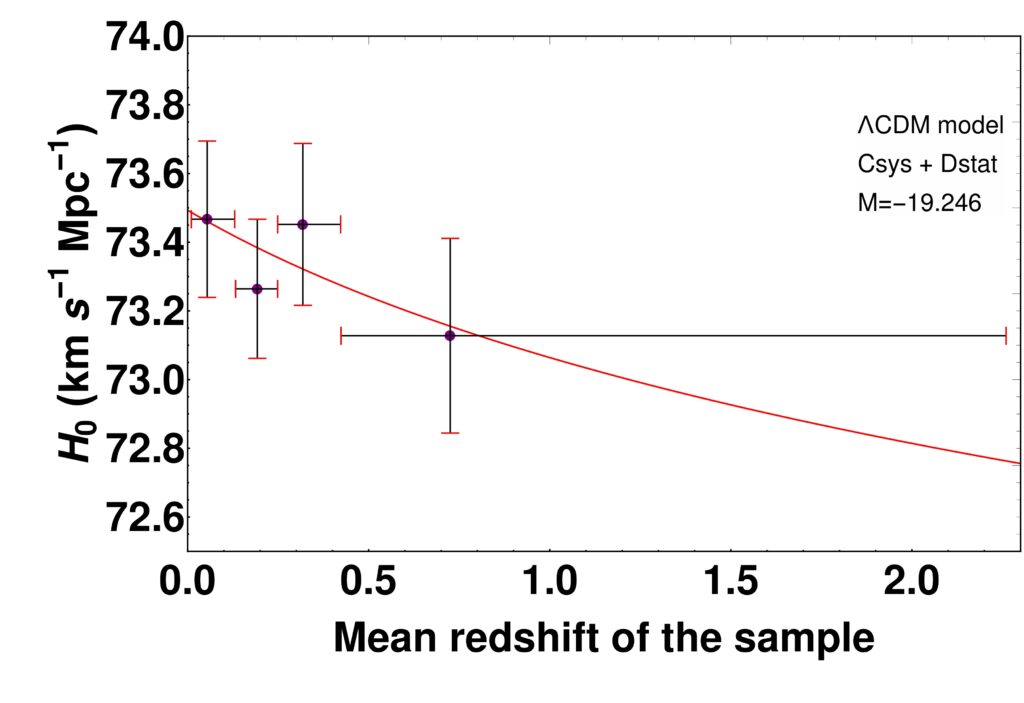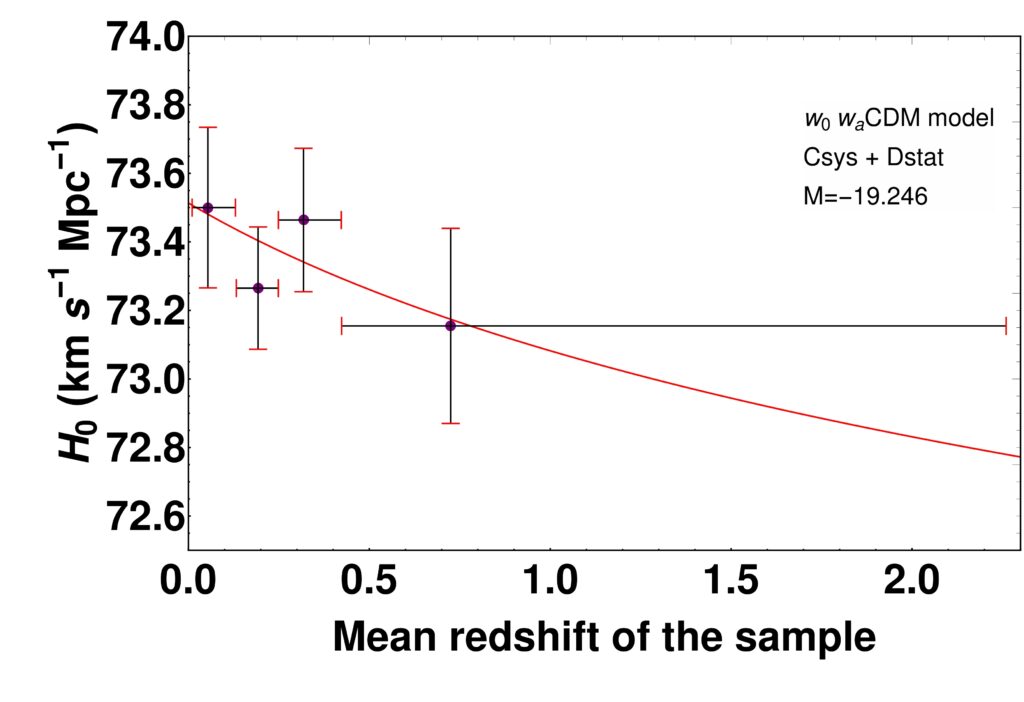Division of Science, NAOJ
Charting the Expansion History of the Universe with Supernovae
Dr. Maria Giovanna Dainotti released her research results.
See the URL below for the details.
NAOJ: https://www.nao.ac.jp/en/news/science/2021/20210514-dos.html
Introduction
One of the most famous open problems of modern cosmology is the Hubble constant (H0) tension. This consists in the discrepancy (> 4 sigma) between the values of H_0 measured with the late universe local probes, namely the Supernovae Ia (SNe Ia), and the early universe observations, the Cosmic Microwave Background (CMB) radiation. The CMB data provides a map of the residual radiation of the very first photons emitted in the early universe, only 380000 years after the Big Bang, while SNe Ia are violent explosions of stars, which in 1998 brought to the discovery that the universe is in a stage of an accelerated expansion. The most accredited model used to describe the evolution of the universe is the so-called standard cosmological model. The standard cosmology is based on the well-known LambdaCDM (cold dark matter) model, which relies on the existence of a cosmological constant Lambda with an equation-of-state parameter w= −1 and a CDM component.
This model is the most widely accepted paradigm to explain the structure and evolution of the late universe. The discovery of the accelerating expansion phase has suggested the presence of a cosmological constant as the most viable scenario to account for the observations of Cepheids, SNe Ia, cosmic chronometer probes for the expansion rate of the parameter H(z), cosmic microwave background (CMB) fluctuations, baryon acoustic oscillations (BAO), weak lensing and other. Among these probes, Cepheids and SNe Ia are considered the most reliable standard candles: astrophysical objects whose luminosity is known or can be derived from well-established connections between quantities that depend from one hand on the distance and from another hand from a quantity that it is independent from the distance. As a candle gives more light the closer it is, the brightness depends on the luminosity distance, a quantity expressed by a given cosmological model. Thus, knowing the distance will allow us to know the most suitable underlying cosmological model given the current observations. Despite this being the reference framework, it suffers from two major open problems of theoretical and observational nature, in particular the aforementioned H0 tension.
The so-called fine-tuning problem deals with the discrepancy between the observed vacuum energy and the predicted theoretical expectation from quantum physics. Indeed, the ratio between the two values is 10^120.
The so-called coincidence problem deals with the still mysterious nature of the constant-energy and dark-matter densities. These are of the same order of magnitude today, while in the past their difference was 10^9 in the CMB epoch. The condition for the late-time acceleration is provided by the equation-of-state parameter of dark energy, w with w<-1/3. On the other hand, differently from previous years, it is now possible to precisely constrain w and its evolution to more than 10%, due to improved determinations of cosmological distances. The Hubble constant tension could be explained by internal inconsistencies in Planck data or SNe Ia systematics in the local determination of H0 or with a new physics that lies beyond the standard cosmological model.



